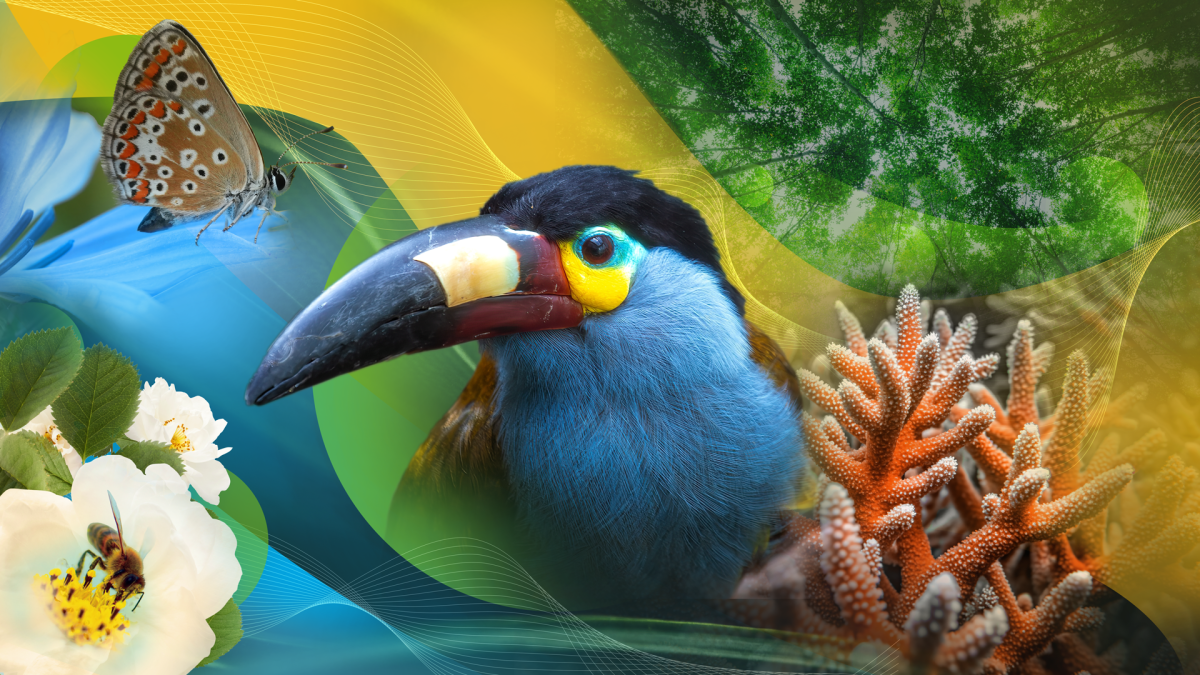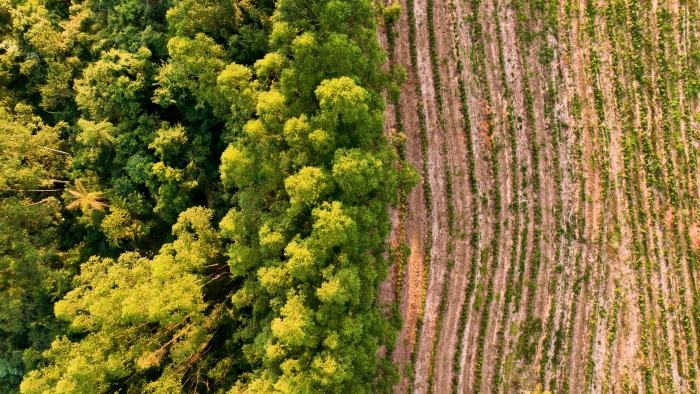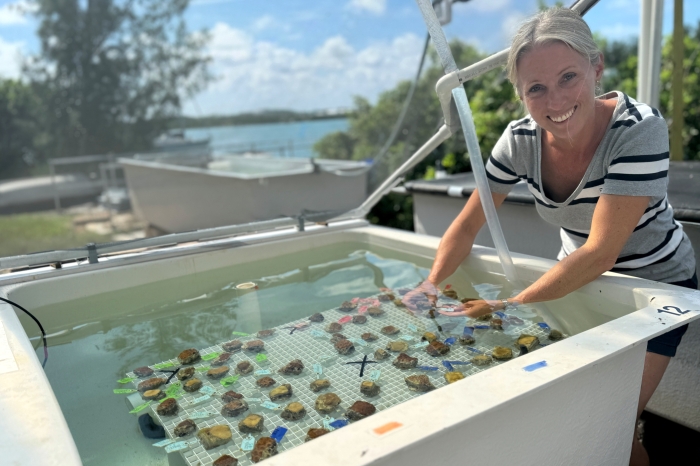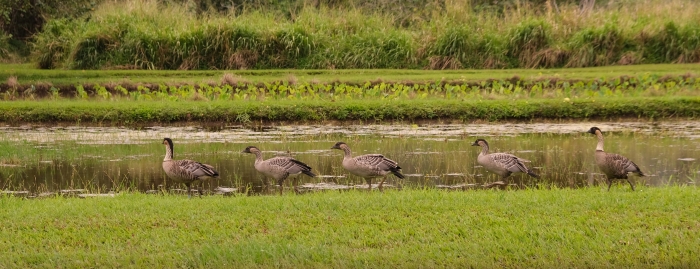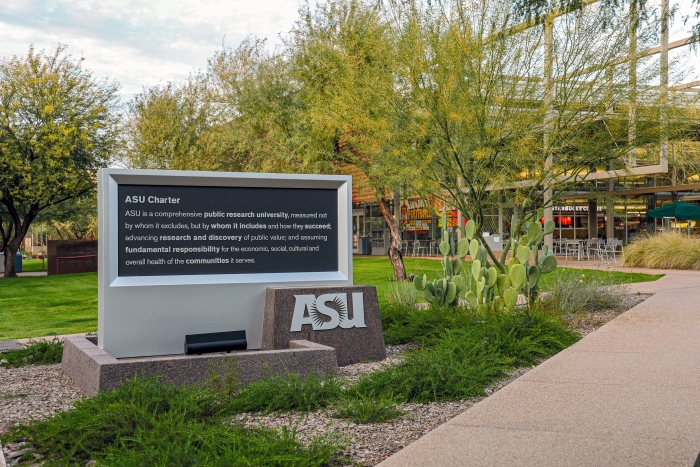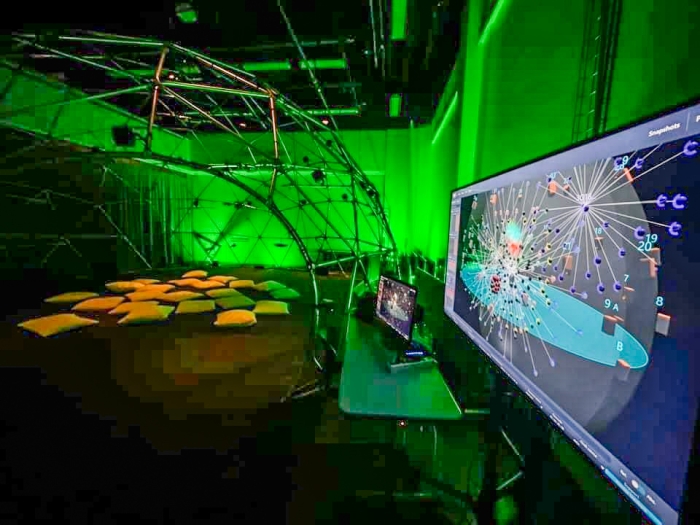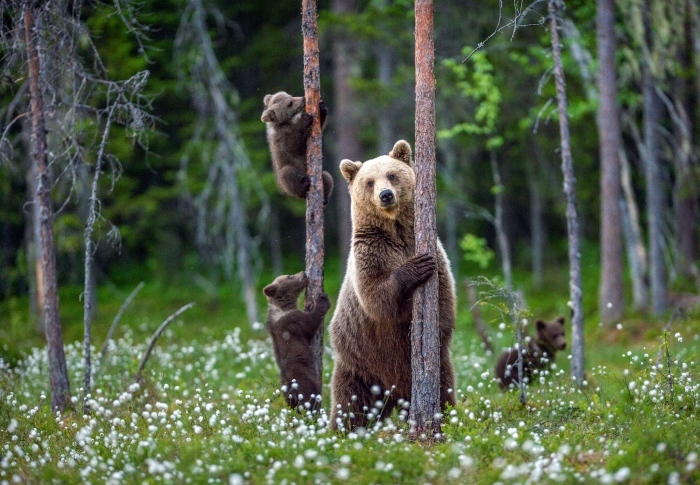Editor's note: This is the sixth story in a series exploring how ASU is changing the way the world solves problems.
On a cool morning, you hike a desert trail, noticing the life around you. Saguaros and creosote. Hawks and lizards. Rabbits and centipedes.
This is a picture of biodiversity, a term that combines the words “biological" and "diversity.” It refers to all species of life on Earth and how different they are from each other.
There are an estimated 8.7 million species on Earth, though it could be off by billions more. Based on that number, we’ve only discovered two out of every 10 species.
Unfortunately, we are losing species to extinction faster than ever before. Around 1 million animal and plant species are threatened with extinction. On average, the number of animals within any given species has declined by nearly 70% since 1970.
People don’t live apart from nature. We depend on biodiversity. It provides things we may take for granted, like clean air and water, a healthy climate, pest control, medicines and the ability to grow food. Threats to these resources make conservation a top priority for our future.
Arizona State University offers a unique place to tackle conservation. We explore how people interact with nature through policy, business practices, culture, cities and art. This helps us find creative new solutions to a complex problem.
Here, ASU researchers share eight ways that we can protect wildlife. And it all starts with knowing that individuals and communities can make a difference.
The top threats to biodiversity are:
- Climate change: Plants and animals struggle to adapt to unusually fast changes in temperature and weather patterns.
- Pollution: Pesticides, plastics, toxic chemicals and even noise and light disrupt the lives of plants and animals.
- Habitat loss: When we clear land to mine, farm, add highways or build cities, we destroy species’ homes or prevent them from migrating.
- Invasive species: These species are not native to their environment. They disrupt the ecosystem and outcompete, prey on or infect native species.
- Overuse of natural resources: When we take resources faster than nature can replace them, we put species at risk of dying out.
1. Persevere with policy
“I was motivated to establish the Center for Biodiversity Outcomes because decades of conservation research had not curbed the extinction crisis,” says Leah Gerber, founding director of the center and professor in the School of Life Sciences.
Gerber’s center became the place to try something new. Her goal is to bridge the gap between scientists, policymakers, industry and communities so that research can lead to better outcomes. It also models this process for other conservation groups to use.
At ASU, the center brings different experts together to find new ways to conserve and manage biodiversity. Working with local leaders and communities during the research process helps the scientists know how to meet the conservation need at hand. The center also partners with federal agencies, businesses and organizations to put ideas into action.
Gerber studies how to help policymakers make more efficient conservation decisions. One technique is looking at the pros and cons of different choices, known as a cost-benefit analysis. Gerber says this method focuses leaders on their goals and the actions most likely to help reach them.
The center recently teamed up with ASU’s Decision Theater to create interactive data displays. These powerful displays use the latest technology and data, so participants can test out actions or policies and see models of the results. With this information, decision-makers can make conservation around the world more effective.
Gerber will add to global biodiversity talks this October at the 16th meeting of the Conference of the Parties (COP 16) to the U.N. Convention on Biological Diversity. She will represent the center in a delegation and lead a workshop on how businesses can engage in conservation.
Both patience and persistence are key in the slow-moving world of conservation policy. Gerber regularly testifies to Congress on conservation issues. Her aim is to keep biodiversity top of mind for politicians.
“The policy world is very nonlinear. A lot of times, we might be pushing hard on some relevant science, but the timing isn't right for decision-making,” Gerber says. “What I have learned is to just keep doing the work and be ready to engage when the timing is right.”
For instance, she helped the U.S. Fish and Wildlife Service rank species for protection so they can make the best use of limited resources. But it wasn’t until later that they received the funding to put it into practice.
What you can do
The Center for Biodiversity Outcomes created a list of 10 easy actions to protect biodiversity. Try one out!
2. Restore land as we work it
We want to protect biodiversity and fight climate change. But we still need to keep everyone fed and clothed. We can do both by producing goods in a way that helps restore landscapes and oceans.
That’s the mission of Jack Kittinger, the senior vice president of Conservation International’s Center for Sustainable Lands and Waters. ASU launched a partnership with Conservation International in 2016.
“The production systems that we rely on for basic needs all depend on nature. Whether it is farming, herding, fishing — we must transition the way we produce our food and fiber to a regenerative approach,” says Kittinger, who is also a research professor in the School of Ocean Futures. “This approach doesn’t just focus on decreasing impact — it aims to rebuild biodiversity, support whole ecosystems and capture carbon.”
The center works with governments, businesses and producers to foster practices that heal the ecosystem and support communities. Most efforts focus on producers because they are essential for change.
“Farmers and fishers are on the front lines with their hands in the dirt or water. Working directly with these producers is the key. They often know how to implement better practices but lack the resources,” Kittinger says. “That’s where Conservation International comes in. We help producers adopt regenerative practices.”
The center also works with some of the world’s largest companies to help them invest in sustainable products. Big companies are beginning to see how unsustainable practices put business at risk. Kittinger says that after the pandemic, companies realized their supply chains were fragile.
The center helps them make sustainable sources part of their strategy. Doing so creates incentives that affect the whole supply chain and helps the system become a positive one for nature.
What you can do
Focus on buying sustainable goods in an area that’s important to you, like food or clothing. You can also look for ways to buy goods directly from producers, like getting vegetables from a farmer at the local market.
3. Make coral stronger
The world’s vibrant coral reefs are more than beautiful seascape — they support an estimated 25% of all marine life. But these vital habitat-builders are under attack from extreme heat.
Corals are colonies of tiny animals that live in a mutual relationship with algae. Algae give coral their color and nutrients. When corals experience extreme heat, the algae leave, and the coral left behind looks bleached. If they are under stress for a long time, coral will starve without their algae partners.
In April 2024, the National Oceanic and Atmospheric Administration announced a fourth global coral bleaching event, which began in early 2023.
Yvonne Sawall at the ASU Bermuda Institute of Ocean Sciences is finding ways to help coral be more resilient to heat.
In one project, she is trying to make corals stronger by exposing them in the lab to temperatures that stress — but do not kill — the coral. This controlled environment acts like a gym, training the coral to resist heat stress.
“Last year we started working with juvenile corals,” says Sawall, who is also an assistant professor in the School of Ocean Futures. “They may be more flexible and adaptable than adult corals. So if they are exposed to high temperatures, they may have a higher chance of building up this tolerance.”
Fertilizer chemicals, urban runoff and coastal development are local threats to reefs near human settlements. If we reduce these other threats, corals will be able to cope better with heat stress.
Another coral conservation method would use a pump to bring cool water from deeper ocean layers up to the warmer surface waters during a heat wave. Sawall uses the lab to test how coral are affected when exposed to water from different depths and for different amounts of time.
The idea behind this technique is to lessen the impact of a heat wave on coral. The strong temperature fluctuations may also help the coral build temperature resilience. However, it’s a costly method that would work better on small scales, such as protecting a particularly vulnerable or valuable reef.
What you can do
There are many practical ways to help save coral reefs. When visiting the beach, join a beach cleanup or simply pick up any trash that you see. Divers can volunteer for programs like Reef Check. At home, protect waterways by reducing water use and participating in trash cleanups.
4. Use DNA to monitor wildlife
Scientists have discovered and named around 1.8 million species, excluding bacteria. Harris Lewin wants to sequence the DNA of every single one by 2028.
Lewin, a research professor in the Global Futures Laboratory, leads the Earth BioGenome Project. A genome is the entire set of DNA that exists in an organism. The project will not only help us understand biology, but also protect biodiversity and human welfare.
The biggest challenge of the project is not sequencing the genomes, Lewin says. It’s getting samples from millions of species spread across the world.
To get good-quality DNA, the team must collect it from living plants and animals. The project works with botanical gardens and zoos, as well as smaller DNA collection projects, to help meet this challenge.
The genomes of a country’s native wildlife may lead to new products like medicines, materials and technology. Lewin’s team must also ensure that nations and local communities profit fairly.
When conservationists care for critically endangered species, genomes can also help them pair animals to have healthy offspring. This technique successfully helped recover the endangered California condor.
“We can't just go to any place, drop in, collect a sample, put it in our pocket and go home,” Lewin says. “Countries have woken up to the potential value of their biodiversity.”
Genomes have a lot to tell us when it comes to conservation strategy. Scientists can get an early warning of extinction risk by looking at whether a species carries many or few alternate forms of genes. More alternates means more diversity and better health within the species.
But to protect a species and keep its ability to live in the wild, saving that one species is not enough. We must also protect the systems that allow it to survive, like sources of food and shelter.
“The cutting edge of genomics in conservation is to think in terms of ecosystems,” says Lewin. “We need to have ways of assessing the health of ecosystems. Knowing what's there helps us to conserve animals in their native habitats.”
What you can do
Help genetic and conservation scientists know which species are in your area. Download the iNaturalist app to upload photos and locations of the wildlife you find. You can also join a family-friendly BioBlitz event at a national park near you. (Arizonans can choose from several recurring events.)
5. Tend to the nature around us
The Hawaiian Islands are 2,400 miles away from the nearest landmass. When the first Polynesians arrived there, stewarding their natural resources was a top priority. Native Hawaiians used fishponds and taro fields to provide the food they needed without overusing nature’s supply.
Taro fields have proven to be valuable bird habitats and are now home to endangered species.
“It wasn't just saving portions of resources, but also amplifying them and making sure that they thrive,” says Katie Kamelamela, an assistant professor in the School of Ocean Futures who is Native Hawaiian.
Protecting biodiversity has cultural importance as well. Native Hawaiians use many different plants, such as maile, to mark life events like weddings, graduations and funerals.
Kamelamela is also a researcher in the Center for Global Discovery and Conservation Science. In her work, she helps with several community projects. One uses Hawaiian agriculture to restore former cattle ranch land and sugarcane fields. Farming traditional foods like taro and banana empowers Native Hawaiians. As they care for the land, they also feed more people, build community and give wildlife more places to live.
Kamelamela is co-authoring the first biodiversity and climate change report by the United States Geological Survey. The report will publish some time next year. In her chapter, she explores how we can learn from Indigenous approaches to care for our ecosystems.
“People are constantly expressing their values on the landscape, whether it be buildings or the cleanliness of waterways,” she says. “It’s important not to silo Indigenous people as the ones who live this way, but to follow their example. We all — individuals, communities, governments — can prioritize our values on our landscapes.”
What you can do
Think about how biodiversity supports your own cultural uses of plants. For instance, if you carve pumpkins in fall, what kinds of insects helped pollinate the plant? And how can you, in turn, support native insect populations?
6. Share our city spaces
People often link cities and urban spaces to habitat loss and biodiversity harm. While that may be fair, it’s not the whole story.
CAP LTER is part of a National Science Foundation research network and is one of only two sites in the 28-site network that studies urban ecology. ASU has led CAP LTER for over 25 years.
Kelli Larson is the lead social scientist for the Central Arizona–Phoenix Long-Term Ecological Research (CAP LTER) project. Her team’s research has shown that urban green spaces can still provide wildlife habitat. Larson is also a professor in the School of Geographical Sciences and Urban Planning and the School of Sustainability.
Conservation works best when we set aside land for protection and, at the same time, welcome native wildlife into our spaces. Your own backyard or neighborhood garden is a great place to start. Using native plants invites birds, pollinators like butterflies and bees, and other local wildlife.
Larson works with the Arizona Wildlife Federation, a nonprofit that encourages gardening to support local wildlife. Its parent organization, the National Wildlife Federation, runs the Garden for Wildlife program. This program allows people to certify a yard space as a wildlife habitat if it meets certain criteria. Home gardens, schoolyards and neighborhood parks are all eligible.
If you plan to share your area with wildlife, however, you may need to adjust your expectations.
“There has to be some level of acceptance of urban wildlife writ large. You’re not always going to get the birds or wildlife you particularly want. Other species may show up as well,” Larson says.
Unwanted wildlife, like insects and snakes, also add value to the ecosystem — if we can learn to appreciate them. We can deter potentially dangerous wildlife while still supporting biodiversity. Depending on the animal of concern, you can take safety measures like securing your trash or installing special fencing.
“There's been so much focus on conflicts, especially in rural areas where they can affect livelihoods like ranching and farming. But we're starting to see a shift towards coexistence in research and practice,” Larson says.
What you can do
Visit the Arizona Wildlife Foundation website and learn how you can attract wildlife to your yard. Consider having your yard space certified as an official wildlife habitat.
7. Listen to the environment
Every place on the planet has a unique sound created by all the activity there. Think about the difference between a forest at night and downtown at rush hour. That’s the idea behind the emerging field of acoustic ecology.
“Sound is probably the richest source of data we have on the planet,” says Garth Paine, who co-directs the Acoustic Ecology Lab at ASU. “But understanding the acoustic property of the environment as a whole is generally overlooked.”
Listen to a soundscape recorded in Ecuador.
Paine, who is also a professor in the School of Arts, Media and Engineering, takes many recordings of an environment over time to study how it changes. The lab team created a model that uses the number of distinct sounds in a recording to measure biodiversity.
In a study of Joshua Tree National Park, for example, Paine has seen that measurement fall. This suggests that the animal diversity there is declining.
When analyzing environmental sounds, the lab doesn’t sort animal sounds from human sounds, like a passing car or chatting hikers. Paine views them all as a meaningful part of the soundscape.
“We ban the word ‘noise’ in the Acoustic Ecology Lab,” he says. “Every sound that's happening in the world is part of the acoustic ecology. The beauty of that is it allows us to discuss balancing and monitoring parts of that acoustic ecology.”
Besides these insights, sound also helps us engage with our environment.
Paine teaches his students how to listen intentionally and direct their focus while taking in the world around them. Every semester, he says, students tell him how environmental listening has benefited them.
“I treat it both as a way of engaging more deeply with the environments we live in, but also as a wellness method. I find students who are listening find much more peace and tranquility in that. They feel like they belong,” Paine says.
What you can do
Attend a community environmental listening workshop at the ASU Hayden Library, where PhD student Celia Yang will teach the art of listening to nature. You can also attend a wellness dome listening session, where you can sit and listen to sounds of the Costa Rican rainforest in a complete surround-sound space.
8. Remember that conservation works
There are many reasons to be hopeful, even in the face of growing threats to biodiversity. The first is this: We know that conservation works. A team of ASU researchers recently found that conservation can stop and even reverse biodiversity loss. Their study looked at over 180 projects from around the globe and over the span of a century.
The study also shows that boosting conservation could restore global biodiversity and lessen the impact of climate change.
Stories of conservation wins are everywhere, if we look. A Madagascar community is protecting vital lemur habitat. A nonprofit is reintroducing key grazing species to Europe. An international partnership is restoring the Colorado River Delta.
The key to these successes is that they rely on more than just conservation scientists. Organizations, policymakers, producers and everyday communities form the engine that keeps conservation moving forward.
More Environment and sustainability

ASU President Michael Crow named to TIME100 Climate list
Editor’s note: This story is featured in the 2024 year in review.Arizona State University President Michael Crow has been named to the 2024 TIME100 Climate list of leaders and innovators…

Driving green desalination
Wilderness survival TV show hosts, pirates and water treatment researchers agree on one thing: Most natural water sources are not safe for drinking. Among the many potential risks is the high salt…

ASU preservation facility serves as test bed for rooftop heat mitigation
A roof coating that uses thermal energy storage materials from Arizona State University spinout EnKoat is halting the heat in several ASU buildings — including a section of the university’s largest…
